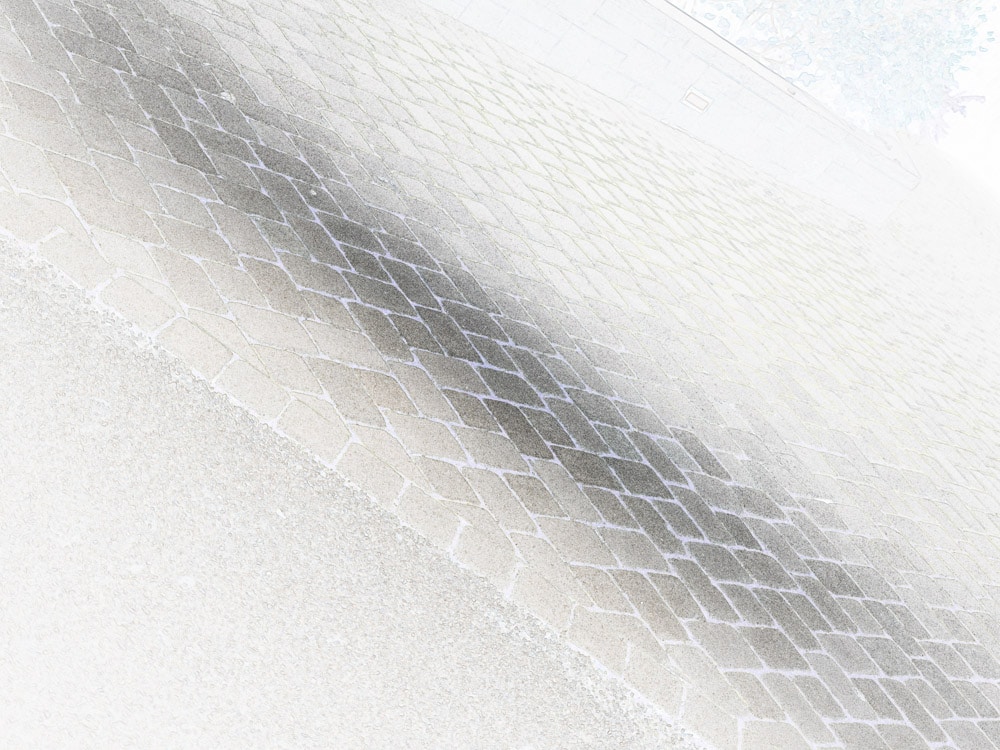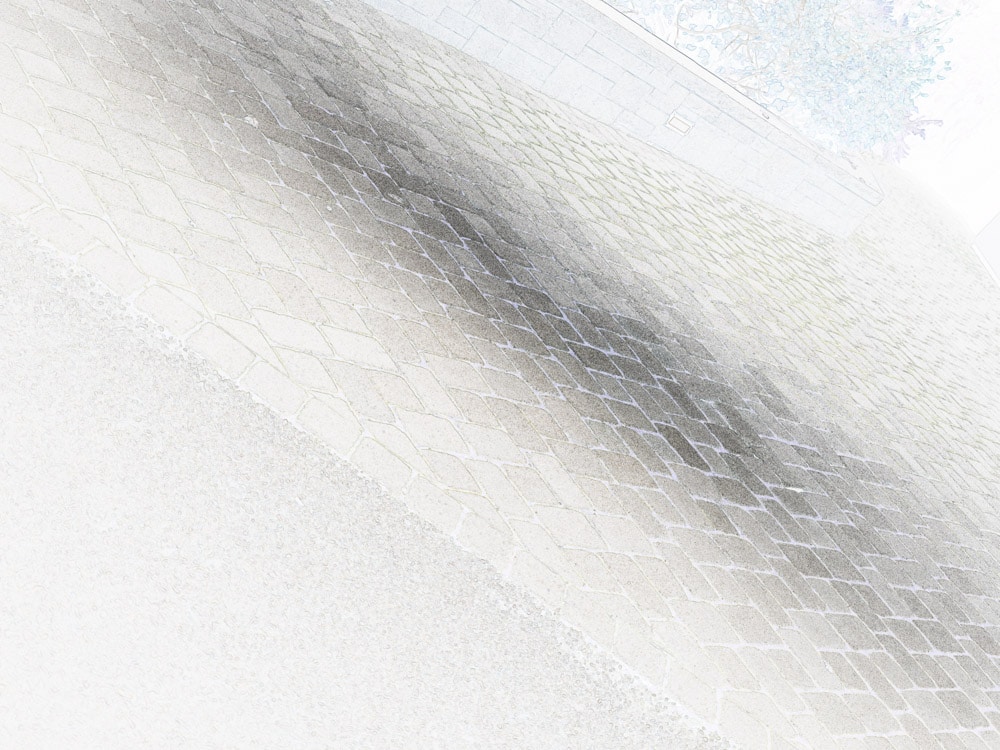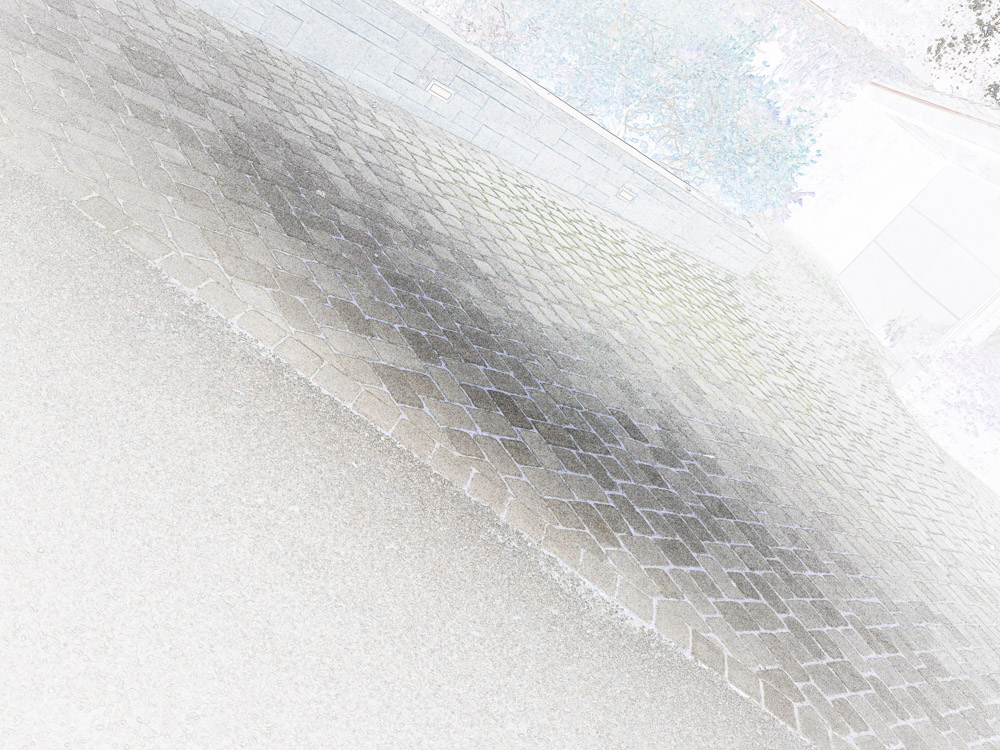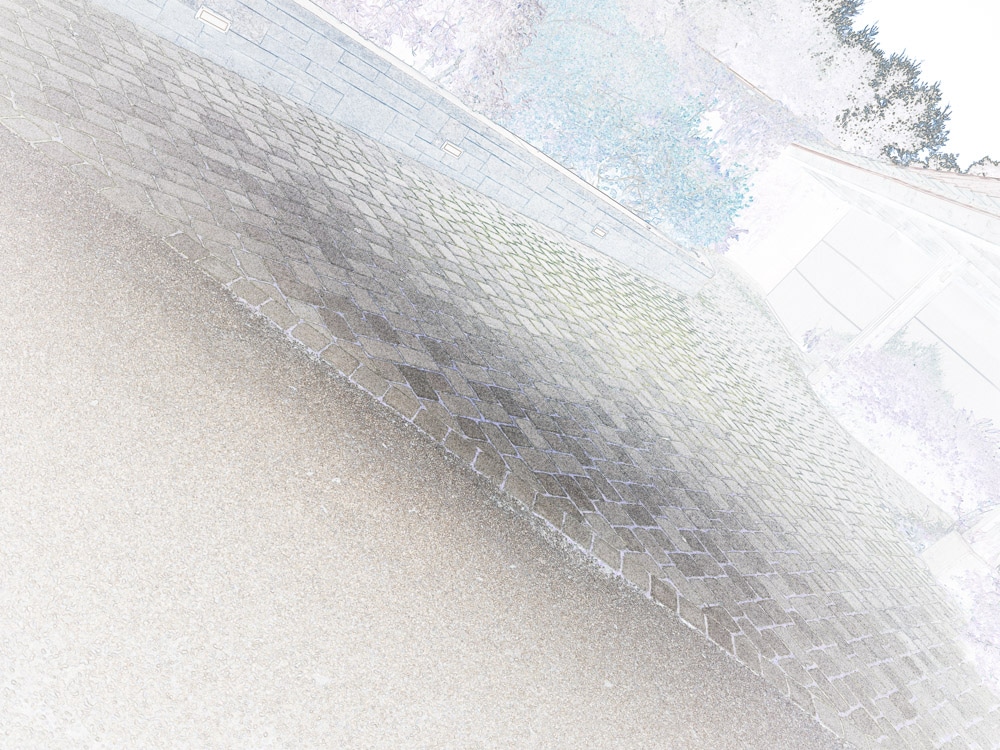In a previous post, I tested the field curvature of the Fuji 35-70 GF using Roger Cicala’s quick and dirty method. A reader said he was having difficulty with what appeared to be field curvature in the corners. That gave me an idea for a modifications of Roger’s test. I rolled the camera so that the horizontal ran through two opposite corners.

Pretty flat here.

Also flat.

Looks flat, but sharpness is falling off in the corners so that Find Edges isn’t finding edges there.

Same as 44mm, only more so.
This is a flat field for any zoom, and really flat field for a kit zoom.
I’m glad you had the same idea I had for looking into the corners too, Jim. I wrote a long article for Medium Format magazine a few months back, reviewing the GF32-64 and 45-100 lenses, and field curvature tests using the Find Edges trick was a major feature of the article. The article is only available to subscribers, but I’m hoping to be able to post it at some point. I have never yet gotten around to doing any diagonal tests, but given how common curvature near and in the corners is, it makes a great deal of sense to do testing that way, though getting the “plane” of focus to pass exactly through the corners certainly ups the difficulty of focusing optimally for the test.
The 35-70 is plainly a huge step up from the 32-64 with respect to field curvature. I find the 32-64 great otherwise, but for my kind of work, predictably being able to get everything in focus and in fairly straightforward ways is simply a necessity. All things considered, I prefer the 35-70. It doesn’t have an aperture ring, and the manual focus is touchier, but I can live with those features, in trade for the incredible compactness. I also like what the designer of the lens had to say about it in Fujifilm’s video. I think I saw it in their presentation from a while back where they announced new lenses, etc.
Thanks, Joe, for your insights.